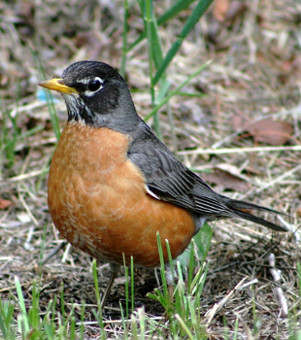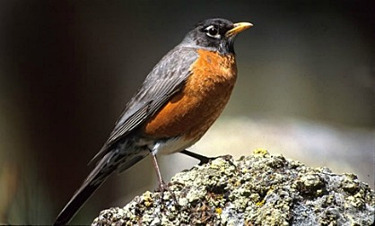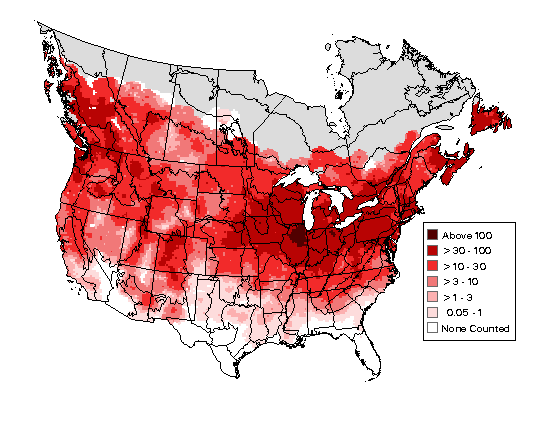American Robin

American Robin Information
Length: 9 - 11"
Habitat: Open woodlands and forest edges; farmlands, orchards, and fields; cities and towns. Wintering flocks seek sheltered woods for roosting and feed on nearby fruit-bearing trees.
Diet: Earthworms and snails; caterpillars, beetles, and other insects; spiders; wild and cultivated fruits and berries.
Additional Information
American RobinRange, habitat, physical description, reproduction, lifespan, behavior, communication, food habits, predation, and conservation status. Includes photos. (From Animal Diversity Web)
American Robin

© NNE & its licensors
American Robin
Identification Tips
- Black to dark gray head
- Broken eye ring
- Dull red breast and belly
- White undertail coverts
- Gray upperparts
- Streaked throat
- Thin yellow bill
- Sexes similar-female somewhat paler
- Winter plumage is somewhat paler than Summer plumage
- Juveniles have spotted, whiter breasts
- Common in residential areas where it often forages on lawns
- Often sings very early in morning
- Often found in large flocks outside of breeding season
(Credit: U. S. Geological Survey)
Breeding Bird Survey Map,
2011-2015

(Image credit: USGS)
Range in New EnglandAmerican Robins breed throughout New England.
In the winter, many birds - especially in far northern New England and Canada - will move southward or to a lower elevation, unless food is abundant in their breeding range. Some robins found in New England in the winter have migrated south from Canada while others are year-round residents.
Robins tend to gather in flocks in the winter and go in search of fruit and berries left on trees and bushes. When breeding season begins, the flocks break up and the birds become more territorial. That's the time when you tend to see individual robins pulling worms on your lawn again.
American Robin
Range Maps from Cornell
American Robin breeding, year-round, and winter range.
Includes separate map of sightings.
Christmas Bird Count Map
Historical CBC Map from USGS